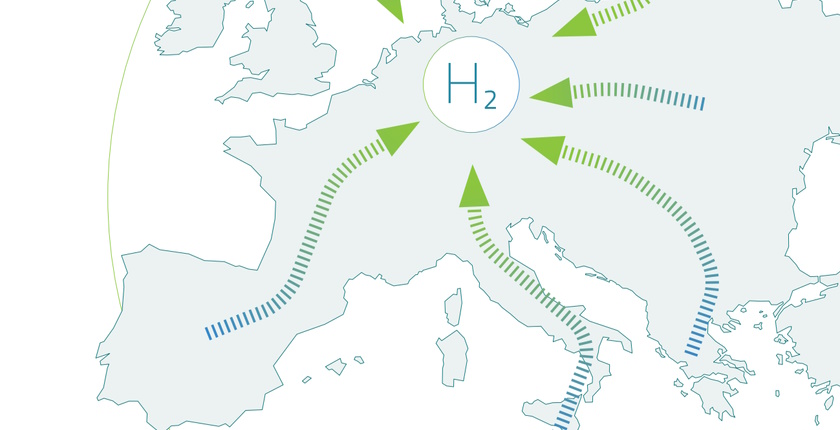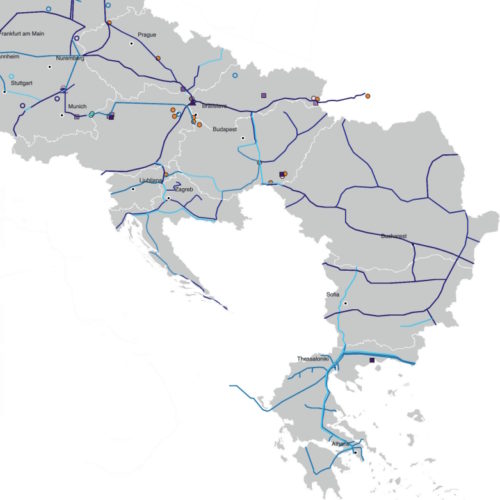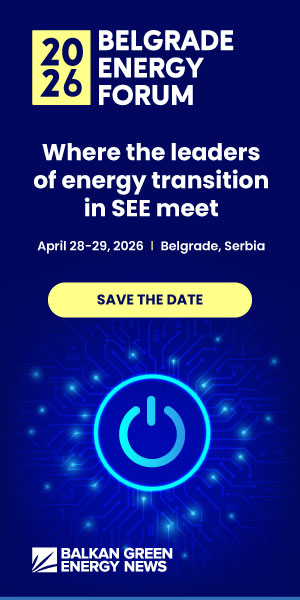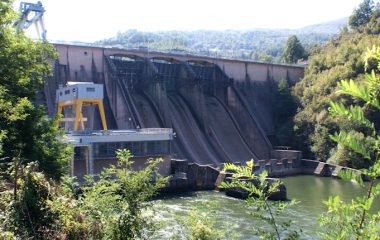
Photo: European Clean Hydrogen Alliance
All six supply corridors outlined by the European Clean Hydrogen Alliance would be connected directly or indirectly to Germany. One major route is through Southeastern Europe while Slovenia and Croatia could also benefit from two other corridors.
The European Commission’s REPowerEU plan to eliminate the demand for fossil fuels from Russia includes a chapter on the necessary acceleration of hydrogen infrastructure development. The goal is to enable the production, import and transportation of 20 million tons of hydrogen per year by 2030.
In a new study, the European Clean Hydrogen Alliance analyzed six perspective corridors consisting of pipelines, production and storage facilities, port terminals and shipping lanes across seas, rivers and land. All six supply routes would be connected to Germany, directly or indirectly, due to the expected surge in demand.
Southeastern Corridor to offer gateway to Middle East
The Learnbook on Hydrogen Supply Corridors points to the need to decarbonize industry, transportation and electricity systems across Eastern and Southeastern Europe is a major driver behind the development of the Southeastern Corridor. It is specifically relevant for new green steel projects and existing industry in Greece, Bulgaria, Romania, Hungary, Slovakia, Croatia, Slovenia, Austria and Czechia, the authors added.
“Due to the vicinity to North Africa and Middle East, the corridor could in the future facilitate hydrogen imports from the neighboring countries via shipping or subsea pipeline transportation. The area offers abundant renewables potential, due to land availability and high-capacity factors for solar and onshore wind. Depleted gas fields in Greece, Czechia, Slovakia, Austria, and salt caverns in Germany will be used to provide a cost-effective hydrogen storage solution,” the study shows.
Projected demand along the Southeastern Corridor grows from 53 TWh in 2030 to 260 TWh by mid-century, strongly outstripping supply (22.1 TWh and 183 TWh, respectively).

Slovenia, Croatia to be positioned near center of hydrogen map
For the region covered by Balkan Green Energy News, it is also relevant to note that Slovenia and Croatia could benefit from two more corridors, according to the document.
The major development driver for the South Central or Adriatic Corridor is the need to meet demand in Italy, Central Europe and Germany with large-scale production at lower cost in North Africa. Slovenia and Croatia can also be connected to the envisaged Eastern Corridor, seen tapping on the potential of renewable hydrogen production in Ukraine.
Together with pipelines, the Danube river could be used for the transportation of hydrogen derivates from Eastern Europe via ships, the association said. It would mean a significant position on the map also for Serbia.
The study identified a large potential in repurposing the pipelines currently carrying fossil gas, which the European Union aims to phase out in the longer term. The study lists all major hydrogen projects.


















Be the first one to comment on this article.